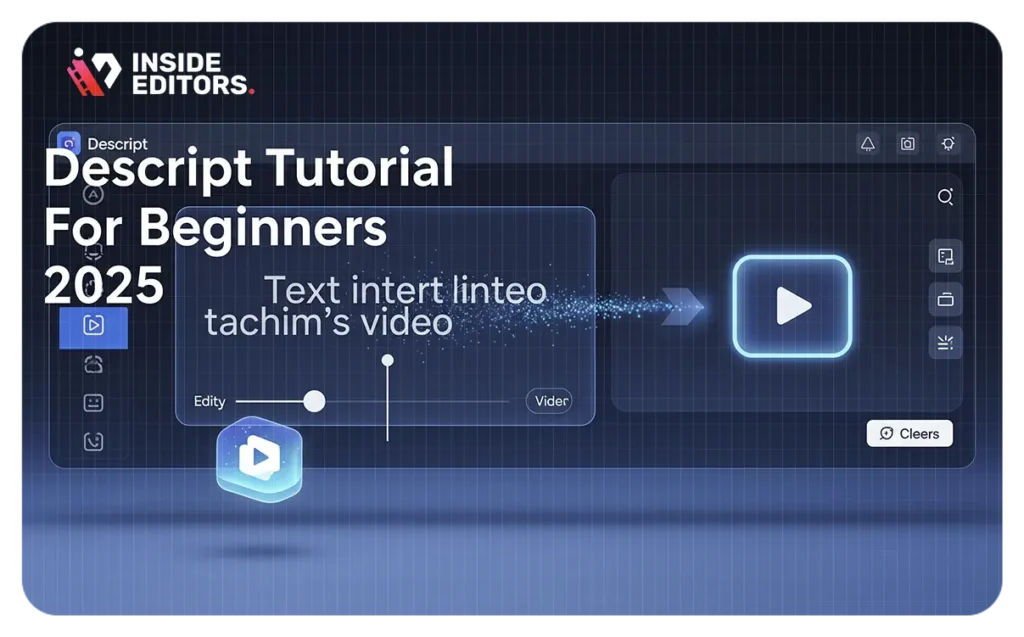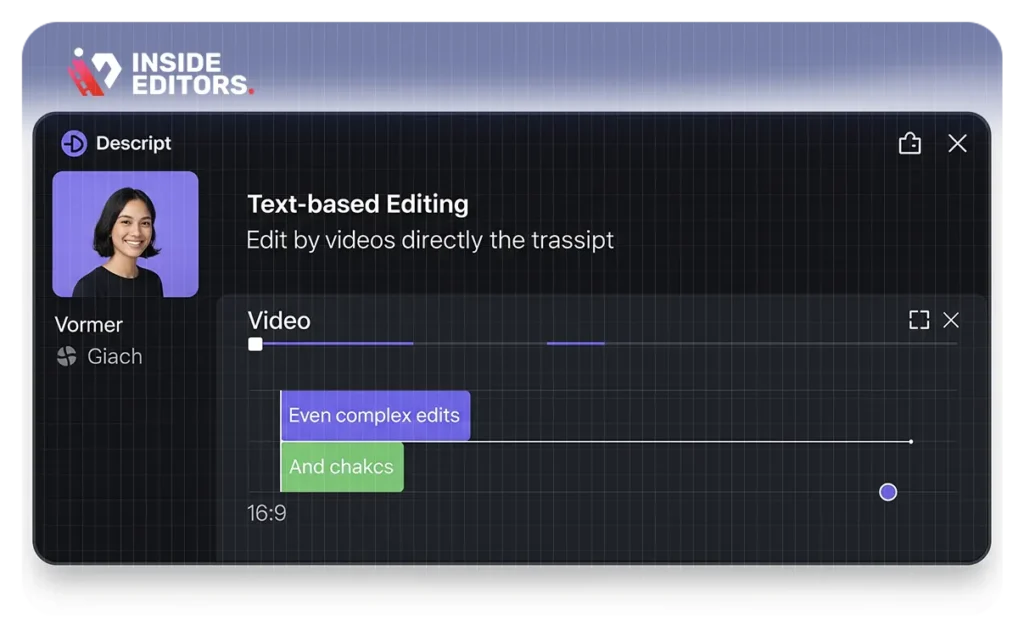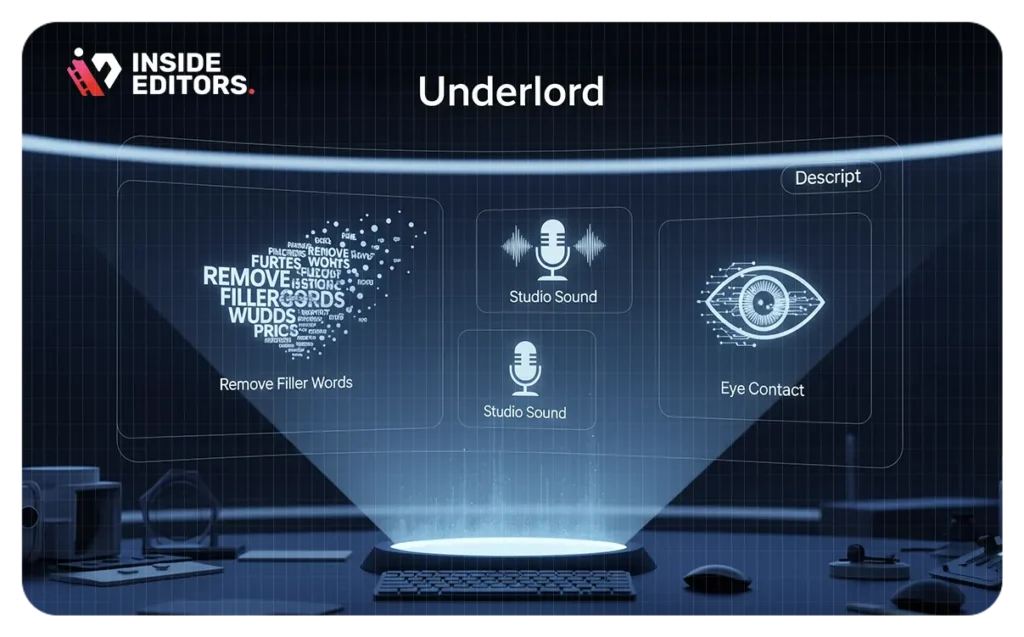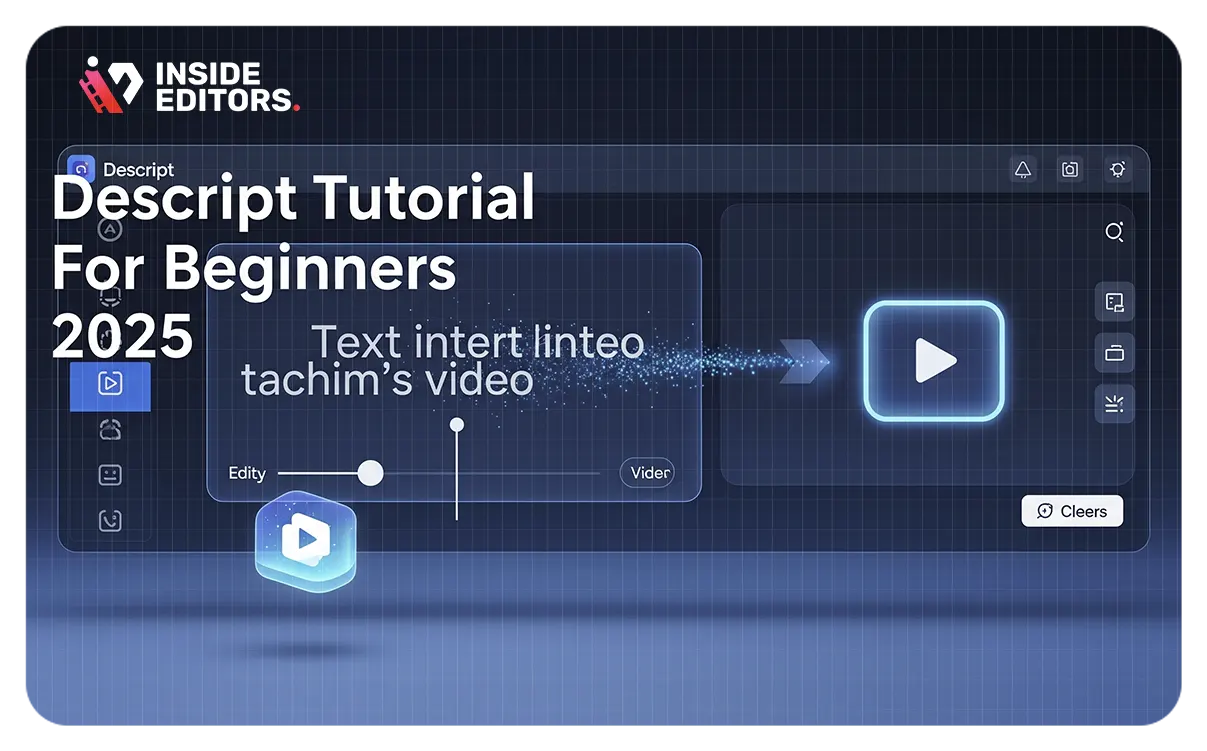In this comprehensive and SEO‑friendly introduction, we’ll explore the cutting‑edge AI‑powered tools and features in Descript that are transforming the video editing landscape in 2025. Whether you’re a beginner learning the ropes or an intermediate creator aiming to upgrade your workflow, this blog post delivers expert insights, step‑by‑step guidance, and proven strategies to make the most of the latest updates. At Inside Editors, we pride ourselves on smart, modern, and helpful content – this deep dive aligns with our E‑E‑A‑T standards, providing real experience, domain expertise, credible sources, and trustworthy advice on becoming a more efficient and effective video editor.
Why Descript Is a Game‑Changer for Creators
Descript has become a staple in modern video editing thanks to its unique text‑based approach. By turning spoken words into editable transcripts, it democratizes the editing process even for those without traditional video editing experience. The 2025 updates further elevate its capabilities, helping both emerging and established creators streamline workflows and improve content quality.

1. Text‑Based Editing with Transcription Accuracy
Descript’s automatic transcription feature has seen notable enhancements. Now, the average word accuracy hovers around industry-leading levels (up to 95–98%), ensuring fewer errors and faster editing. This accuracy enables you to edit your audio or video simply by removing or rearranging text – no timeline scrubbing required.
2. Overdub and Voice Cloning Improvements
One of the standout AI features is Overdub: Descript’s voice synthesis tool. The tutorial outlines how to train a synthetic voice using your own recordings. The 2025 update introduces seamless tone adjustments – formal, conversational, or enthusiastic – while maintaining natural prosody. This is a powerful asset for refining voiceovers and patching up audio seamlessly.
3. AI‑Powered Filler Word Removal
“Um,” “uh,” and similar filler words can distract listeners. Descript’s AI now enables automatic detection and removal of these, saving hours of manual editing. Creators can choose between “strict” or “gentle” cleanup modes based on how polished they want their final video to sound.
4. Studio Sound and Audio Clean‑Up
Poor audio quality can hold back even the strongest video content. Descript’s Studio Sound leverages AI to reduce noise, elevate speech clarity, and balance levels with a single click. The new “Pro‑level normalization” reduces background noise without compromising voice warmth – ideal for podcast-like speech editing.
5. Visual Editing Enhancements
Although predominantly focused on audio and transcript editing, Descript’s latest release introduces waveform‑linked visual tagging. You can mark clips for trimming directly on the text transcript and see them reflected in the video preview. This integration simplifies alignment between content intent and visual flow.
6. Interactive Collaboration and Comments
Creators collaborating with teams will appreciate the upgrade to in‑editor comments and time‑stamped suggestions. You can now leave notes tied to specific transcript sections or video frames – perfect for remote review and feedback cycles.

Step‑by‑Step Walkthrough: Editing in Descript 2025
- Import & Transcribe – Upload your video or audio. Descript automatically generates a transcript.
- Review & Refine – Skim the transcript, correct any transcription errors, and adjust timestamps if necessary.
- Clean Up Fillers – Use the “Clean Filler Words” option. Toggle between Gentle and Strict.
- Edit by Text – Highlight, delete, or cut sections of text to trim content. See changes reflected in the edit instantly.
- Apply Studio Sound – Navigate to the Audio Settings tab and enable Studio Sound. Optionally tweak noise reduction sliders.
- Overdub Enhancements – Record new voice lines or let Overdub generate replacements. Change voice tone without re-recording.
- Visual Markers & Timeline Sync – Apply markers to signal scene cuts or visual edits using “Add Marker” in-text.
- Collaborate & Export – Invite reviewers to add time-stamped comments. When ready, export in formats like MP4, WAV, or edit-ready XML for Final Cut Pro or Premiere.
Tips to Maximize Efficiency
- Start with a Clean Transcript: Quickly scan for misheard words. Better transcription = faster editing.
- Leverage Filler Removal: Even on “Gentle,” this feature removes most ums and uhs, saving significant manual cleanup time.
- Use Overdub Sparingly: While convenient, overusing AI voice can sound unnatural. Combine it with real voice for best results.
- Color‑Code Markers: Use colored markers to categorize review vs. final edit notes – this speeds up team collaboration.
- Export Intermediate XML: For complex video projects, export to Premiere Pro or FCP, leveraging Descript’s power early and precision later.
Benefits for Beginnings and Intermediates
- Beginners get a welcoming, intuitive interface: editing is done through text, not timelines.
- Intermediate users gain advanced tools like noise reduction, Overdub voice mode, and timeline export, enabling more refined results without switching platforms.

Inside Editors’ Perspective
At Inside Editors, we’ve seen creators cut editing time by over 50% using Descript’s workflow compared to traditional NLEs. The combination of transcript editing, AI tools, and seamless exports supports a more focused creative process – with less technical friction. Our corporate and long‑form video clients also praise the built‑in collaboration tools that streamline review stages, saving both time and money. Consider our video editing services if you’re looking for expert support with Descript-accelerated workflow.
- Want a full guide on YouTube editing? Check our YouTube Video Editing Guide.
- Learn about our corporate video editing services.
- Interested in advanced video SEO? Visit our video SEO services.
Is Descript suitable for full video projects or just clips?
Descript handles both short and long-form content. While it’s ideal for dialogue-based media (e.g., interviews, podcasts, tutorials), you can export XML for detailed refinements in Premiere or Final Cut.
Can I use Overdub with my own voice?
Yes. Following the tutorial, you record 10+ minutes of your voice to build a custom Overdub model. It supports tone adjustments like formal or casual.
Does Studio Sound affect background music?
No. Studio Sound is optimized for speech. If background music is present, it may get slightly leveled, but voice clarity and consistency remain the focus.
How accurate is automated filler word removal?
It’s highly accurate – typically removing 90–95% of filler words. Always review the edit to ensure readability and natural pacing.
Where can I find more Descript tutorials at Inside Editors?
Explore our YouTube Video Editing Guide for additional tutorials, best practices, and tool comparisons.





